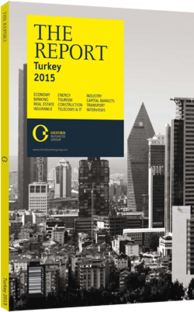Suat İnce, Deputy Chief Executive, Türkiye İfl Bankası: Interview

Interview: Suat İnce
How important is foreign investment to the Turkish economy? Why should multinationals consider Turkey an attractive market in which to invest?
SUAT İNCE: Over the past decade, foreign direct investment (FDI) in the Turkish economy has risen considerably. As one of the fastest-growing economies in the OECD, Turkey has attracted more than $140bn of foreign capital in the last 10 years. Indeed, Turkey has climbed two spots in the 2015 AT Kearney FDI Index and is ranked 22nd, received $12.1bn of FDI in 2014 and, as of December 2014, had about 41,000 foreign firms in the country. Given Turkey’s reliance on foreign capital to finance its sizeable current account deficit, the government has made it a major goal to attract larger amounts of FDI. It sees this as more sustainable than portfolio inflows, which are subject to sudden swings of volatility.
Besides being a gateway between Europe, Asia, the Middle East and Africa, Turkey has many attractive qualities for foreign investors: a large and growing domestic market, a liberal and secure investment environment, a mature and dynamic private sector, a high-quality and cost-effective labour force, the Customs union it shares with the EU, developed infrastructure, an institutionalised economy and a competitive tax system.
When investing in the Turkish market, what specialised banking needs do multinationals have?
İNCE: Most Turkish Banks have large national networks with commercial branches across the country, experienced field teams, customer relationship managers and customer representatives. Through these networks, Turkish banks are able to serve their clients effectively from the incorporation phase, helping to identify their needs and facilitating growth. While the banking system in Turkey is very mature, similar to those in Europe and other more developed markets, there are slight differences between the systems that may be confusing to foreign investors – especially what types of financial products and services are most suitable to the Turkish market. Turkey’s strong local banks, with their significant clout in certain industries, can help foreign entrants navigate the market. For example, as a part of İşbanks’ strategy of being a customer-oriented bank, a new and unprecedented unit was established in 2012 that is dedicated to meeting the needs of multinational companies that have operations in Turkey.
Another common issue with multinationals that have started their operations recently is finding domestic sources of financing for their investments. Turkey-based branches of many of these foreign firms are young, relatively small and do not have strong credit histories, making it hard for them to attract loans. To remedy this, it is important to take into account the global operations and growth plans of the mother company when evaluating loan prospects, making it easier for local subsidiaries to leverage their parent companies’ balance sheets to acquire funding and receive high-quality services regardless of size. This approach is only possible with a team experienced and specialised in providing banking services for new foreign companies in their growing phase. This innovation, plus other solutions being devised for companies backed by foreign capital, will help multinationals investing the country.
Which sectors hold the best opportunities for FDI?
İNCE: If you look at the breakdown of FDI by sector, three stand out as attracting the most foreign capital in the last five years: finance (30%), manufacturing (29%) and energy (22%). Banks and insurance companies have been the main beneficiaries of this inflow, but we expect other fields in the finance sector to attract more interest in the future, such as leasing, factoring and asset management. As for energy, the ongoing liberalisation process has created a more vibrant and competitive market, which has already seen large foreign investments and is likely to see more in the near future. There are also considerable opportunities across energy sub-sectors in each link of the value chain. Industry is another area with high potential: for example, machinery manufacturing has seen a 64% rise in FDI since 2005.
You have reached the limit of premium articles you can view for free.
Choose from the options below to purchase print or digital editions of our Reports. You can also purchase a website subscription giving you unlimited access to all of our Reports online for 12 months.
If you have already purchased this Report or have a website subscription, please login to continue.

